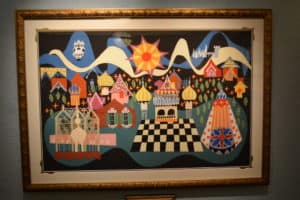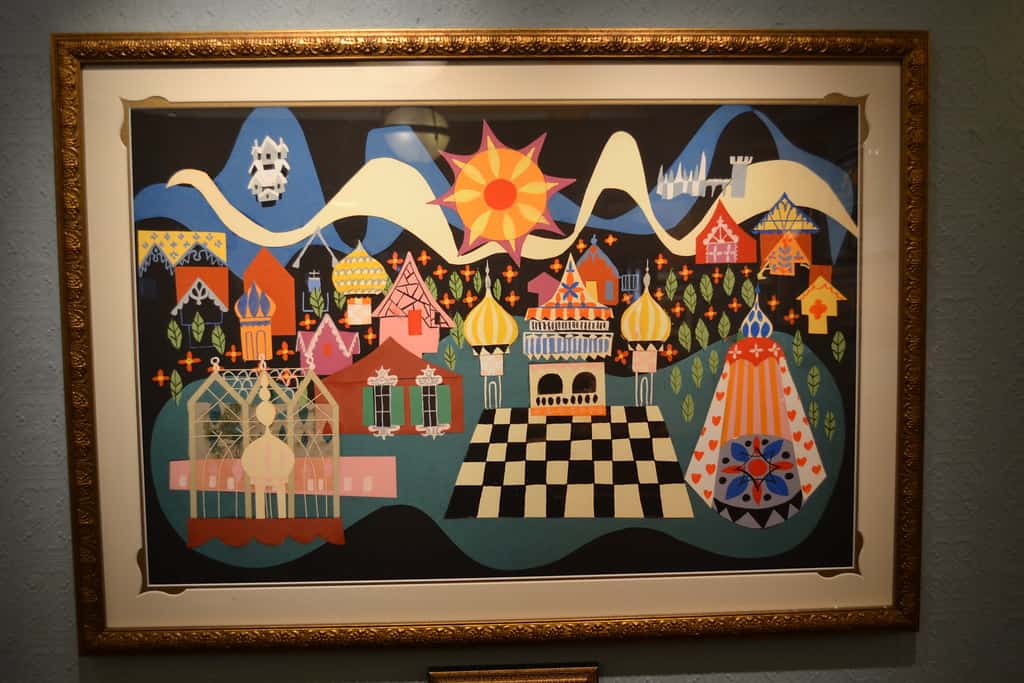
When I was about three or four years old, my parents took me to my first movie in a theater – Disney’s Snow White. They weren’t sure if I would be able to sit still, or if I would be overwhelmed by the darkness or the sound. But I sat there, completely entranced, for the entire film. Only when it ended and the lights came up, did I start to sob. My parents were startled, and as they ushered me out of the theater, they kept reassuring me, “It was just a movie! The witch isn’t real!” But as I sobbed through the parking lot, the adults within earshot burst into laughter as I choked out “I… just… didn’t want it… to end!”
This is a memory that has stayed with me, and I have always thought about it through the lens of storytelling and its universal power. I have always loved stories in all forms, especially books and movies. But recently, as I saw a colleague checking out a book about the female artists who worked at the Walt Disney Studios, something else occurred to me. I had thought for years about the stories and intricate artwork in Disney, but had never known much about who was behind it all. I needed to learn more about the women who helped tell these powerful stories.
The Queens of Animation by Nathalia Holt, is the story of the women who worked to create and shape the animated Disney movies, from 1937’s Snow White to Frozen. Early on, these were women who were inspired by seeing some of the first Disney cartoons, like Steamboat Willie, and made it their mission to work at the studio.
Unsurprisingly, it was difficult to find work as a woman in animation in the 1930s. Job postings were listed in areas of Men’s Work and Women’s, and most professional jobs did not mix genders. Originally, the Disney studios only employed women in its Ink and Paint Department. Talented male artists were hired as animators or assistant animators, and they were the artists who worked with the Story Department to create the characters and stories that needed to be drawn. Once completed, the images were sent over to the women of the Ink and Paint Department to trace in smooth India ink onto the transparent cells, and after the advent of color movies, paint them. Though integral to every picture- films that are considered some of the most timeless classics in American cinema- these women were never credited as artists, and were paid a fraction of what male artists made.
But Walt Disney was a man of chance and innovation. Though he did not set out to employ women, he also recognized talent when he saw it. Holt’s book centers on five women who helped make Disney into the company we know today: Bianca Majolie, Grace Huntington, Sylvia Holland, Retta Scott, and Mary Blair.
The first woman he hired was an old classmate of his, Bianca Majolie, whom he took on as a storyboard artist in 1935. Bianca would create many story treatments for the company, and helped mold films like Snow White, Bambi, and Pinocchio (which she also translated from the original Italian for the studio).
In 1936, Disney hired Grace Huntington as a writer. Grace would lend her intellect and wit to the early Disney films, and she was a great screenwriter. She was also a record-setting pilot, and what she really wanted to do was fly. Unfortunately, even during a shortage of male pilots during World War II, no one would hire a woman.
Sylvia Holland, the second woman to be hired in the storyboard department, was an accomplished artist and musician. Her musical knowledge would prove invaluable, helping Disney find the right music to use in his films, which would shape emotional elements of the story. Holland chose the music from the Russian ballet, The Nutcracker, to use in the film Fantasia. The use of this music in the film helped reintroduce the ballet to America, where it had previously been a failure with audiences.
Retta Scott would become the first female animator given screen credit in a Walt Disney Animation Studios picture. This is remarkable, as screen credits were rare for most animators, and generally the competition was cut-throat among the most senior animators working on a film. Retta worked on several Disney films before becoming an artist at Golden Books, where she helped create some of the most successful children’s books of the time.
Eventually, Holt focuses on the most influential of her subjects, Mary Blair. Blair was brought in as a storyboard artist, and she would influence the company like no one else. Originally, Blair’s husband Lee was hired as an animator, but Mary was the one who would enchant Walt Disney and become one of his favorite artists. Her playful paintings, with bright colors and flat, modern style would inspire the feel of films like Cinderella, Alice in Wonderland, and many more. She would be the artist Disney would return to again and again, to create the magical feel for his stories. Blair created an exhibit for Disney’s presentation at the 1964-1965 World’s Fair entitled “It’s a Small World.” The concept would prove so popular that he replicated it in his theme parks and these attractions are still active today. After working for Disney, Mary would join her lifelong friend Retta Scott at Golden Books, bringing her colorful modern style to children’s literature.
These exceptional women were largely forgotten for many years, and most of them did not enjoy much recognition in their lifetimes. Only recently has their work been rediscovered and properly studied. In addition to Nathalia Holt’s The Queens of Animation, Mindy Johnson has written two books about the women of Disney. Ink and Paint: The Women of Walt Disney Animation is a coffee table book featuring photographs of the women who worked at the Disney Studios, and abundant samples of their art. Johnson also created a book aimed at a younger audience, Pencils, Pens and Brushes: A Great Girl’s Guide to Disney Animation, which takes her research from Ink and Paint and creates illustrated collected biographies of the female animators. Mary Blair has several books about her, including The Art and Flair of Mary Blair by John Canemaker, a stunning biography and appreciation of her art.
Even though I didn’t know these women’s names, their artwork and craft has been inspiring me throughout my life. Now that I’ve read The Queens of Animation, I know who to thank for the joy some of the timeless Disney films mentioned above provide again and again.
Nicole Guerra-Coon is the Assistant Children’s Librarian at the Morrill Memorial Library in Norwood, MA. Look for her article in the December 26, 2019 issue of the Transcript and Bulletin.



